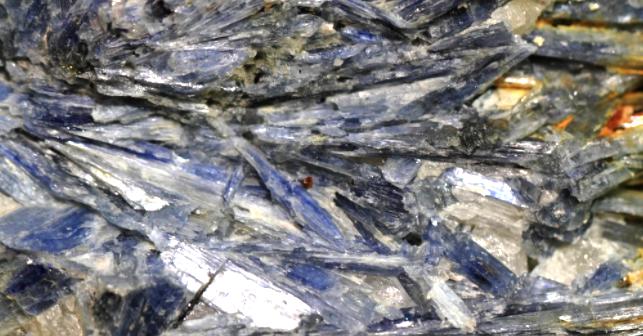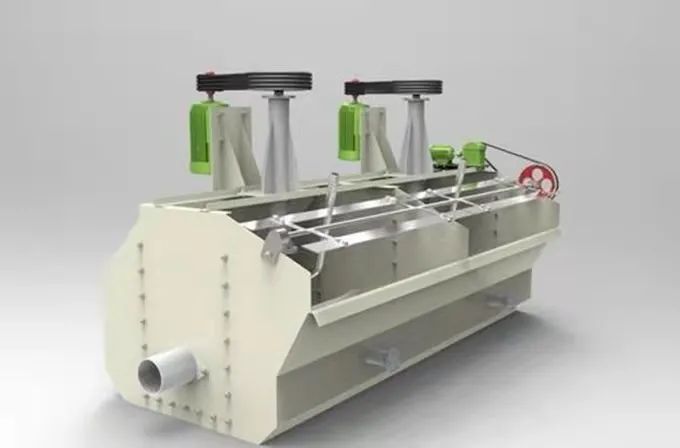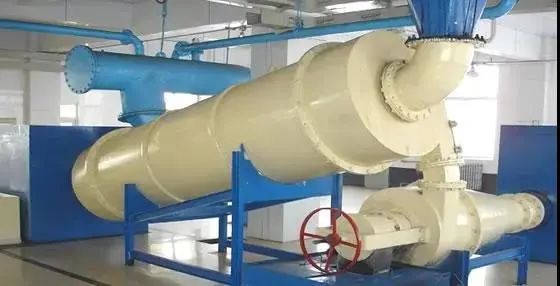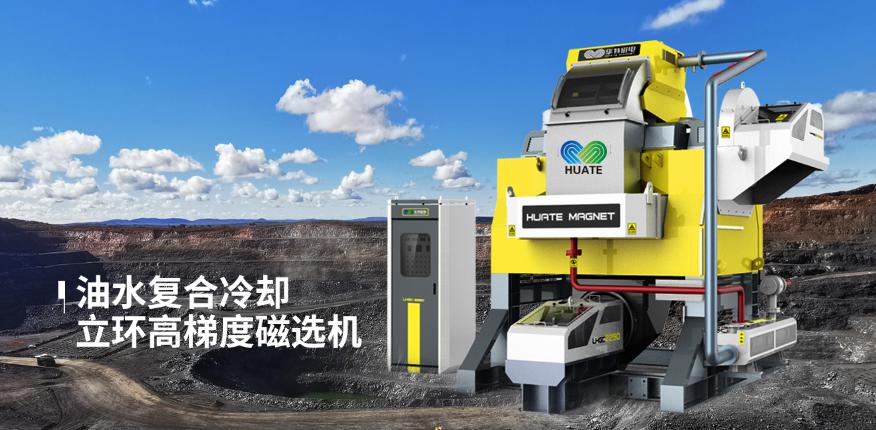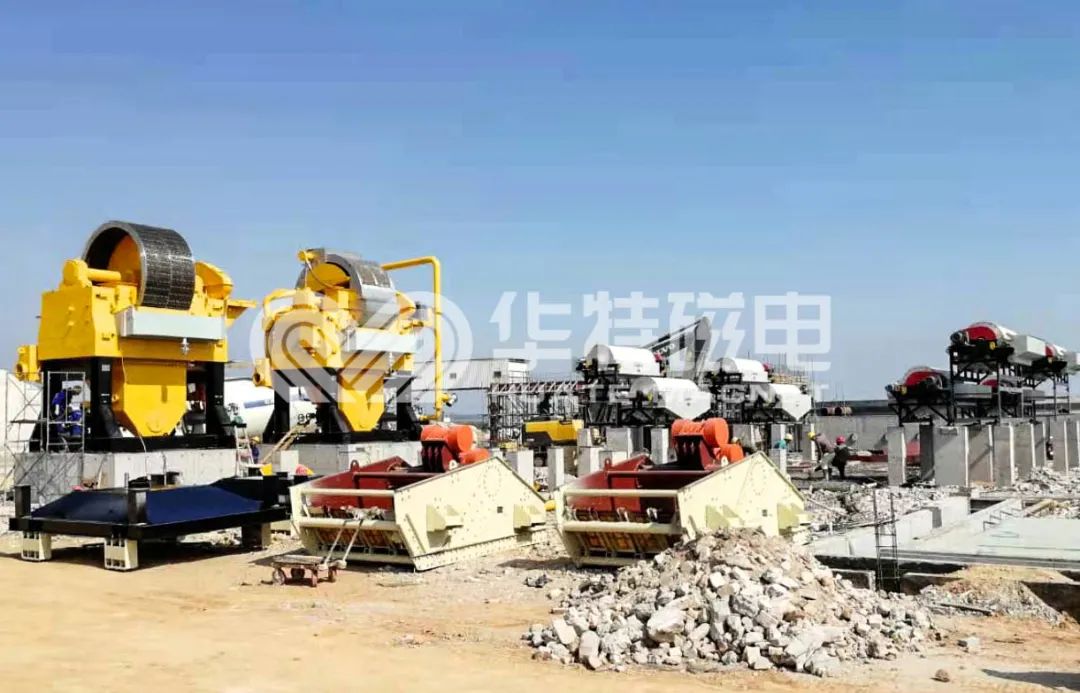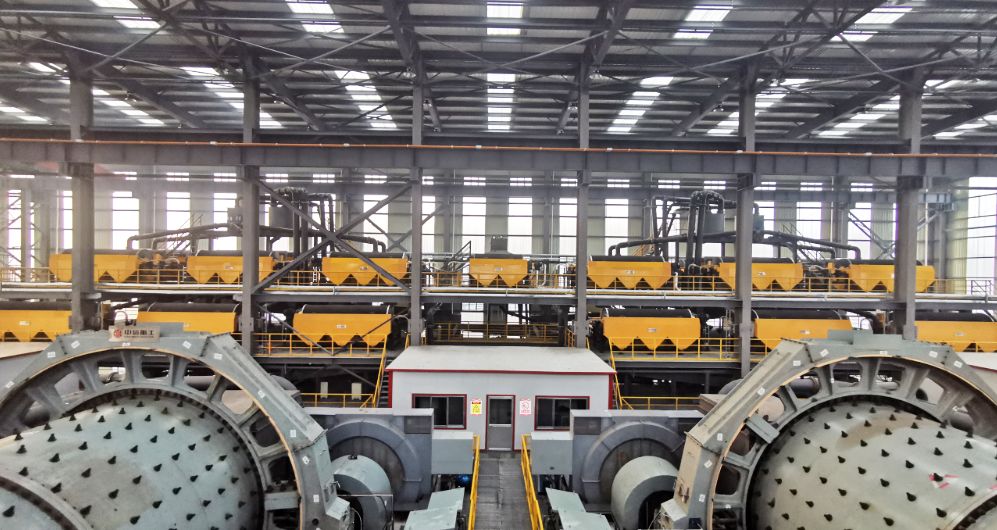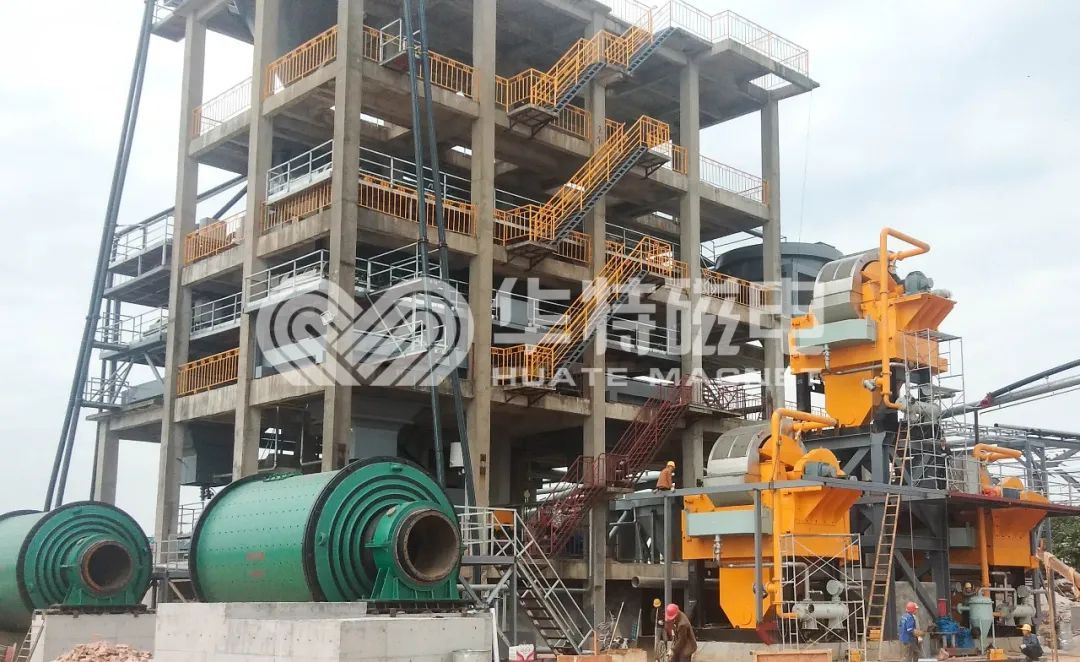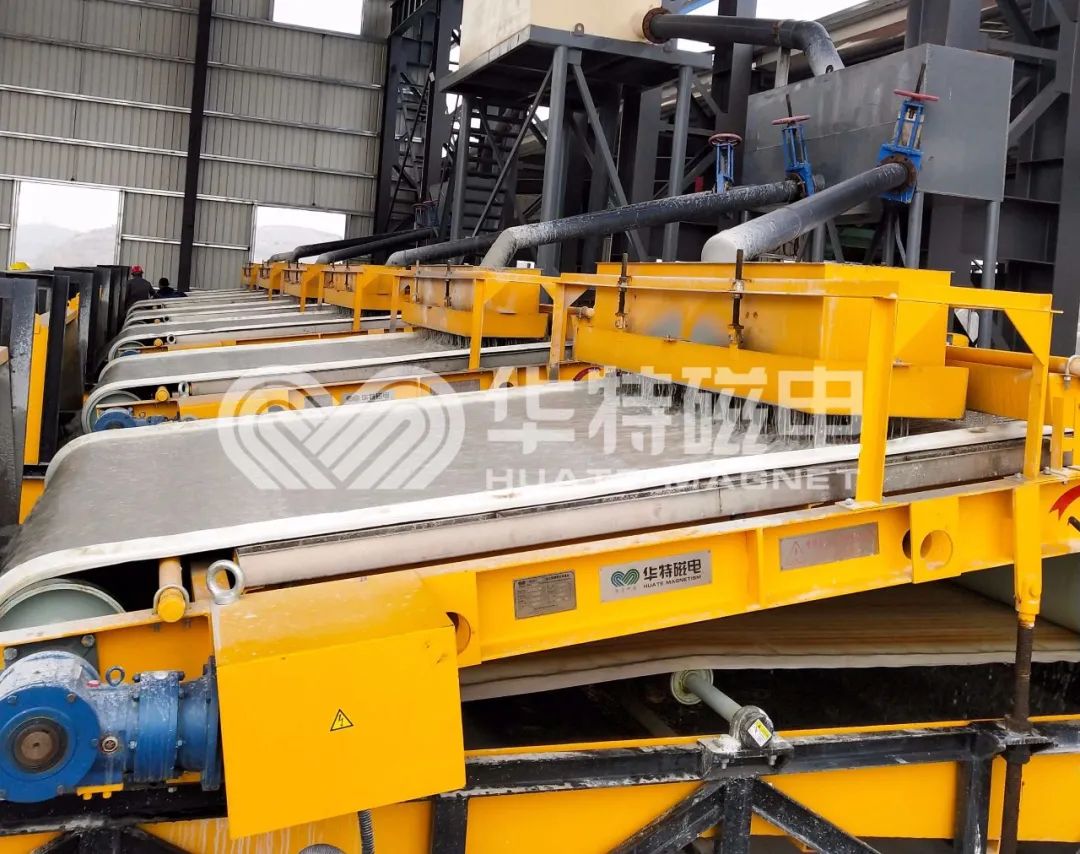Kyanite minerals include kyanite, andalusite, and sillimanite. The three are homogeneous and multiphase variants, and the chemical formula is AI2SlO5, containing AI2O362.93% and SiO237.07%. Kyanite minerals have high refractoriness, chemical stability and mechanical strength. They are the raw materials of high-quality refractory materials and are widely used in the production of refractory materials, advanced ceramics, aluminum-silicon alloys and refractory fibers.
Ore Properties and Mineral Structure
Kyanite crystals are flat columnar, blue or blue-gray, vitreous and pearly. The hardness of the parallel crystal extension direction is 5.5, and the hardness of the perpendicular crystal extension direction is 6.5 to 7, so it is called “two hard stones”, and the density is 3.56 to 3.68g/cm3. The main components are kyanite and a small amount of sillimanite.
Andalusite crystals are columnar, nearly square in cross section, and arranged in a regular cross shape on the cross section. 3.2g/cm3.
Sillimanite crystals are needle-like, usually radial and fibrous aggregates, gray-brown or gray-green, vitreous, 7 hardness, and 3.23-3.27g/cm3 density.
Kyanite group minerals are converted into a mixture of mullite (also known as mullite) and silica (cristobalite) upon calcination at high temperature, and undergo volume expansion. Associated minerals include biotite, muscovite, sericite, quartz, graphite, plagioclase, garnet, rutile, pyrite, chlorite and other minerals.
Application areas and technical indicators
Refractory materials are the main application fields of kyanite minerals, which can be used for making bricks, improving the high temperature performance of refractory products, synthesizing mullite at high temperature, and crystalline and transparent kyanite and andalusite can be used as gemstones or handicrafts.
Main uses of kyanite minerals:
| Application field | Main application |
| Refractory | Making refractory bricks, improving high temperature resistance bricks, unshaped refractory materials |
| Ceramics | Advanced Ceramics, Technical Ceramics |
| Metallurgy | High strength silicon aluminum alloy |
| Refractory fiber | Refractory lining, spark plug lining insulator |
| gemstone | Crystal granularity, bright and transparent as raw material for gemstones |
| Medicine | Manufacture of dentures, aggregate for broken bone connection plates |
| Chemical | High temperature processing mullite, acid resistant material, high temperature measuring tube |
Due to the performance differences of various mineral raw materials, uses and application process levels, there are different requirements for the quality of kyanite concentrates.
Processing technology – beneficiation and purification
The beneficiation method and technological process of kyanite minerals mainly depend on the embedded characteristics of the minerals, generally flotation, gravity separation and magnetic separation, etc.
①Flotation
Flotation is the main beneficiation method for kyanite minerals, but it generally needs to be combined with other methods to meet the requirements of industrial indicators. Gravity desliming or flotation after magnetic separation are often used. The collectors use fatty acids and their salts, neutral or weakly acidic pulp PH value, the main influencing factors are grinding fineness, impurity properties, desliming effect, chemical system and pulp PH value.
②Reselect
For coarse-grained inlaid and mixed inlaid kyanite minerals, the gravity separation method is mostly used, and the gravity separation equipment includes a shaking table, a cyclone, a heavy medium and a spiral chute.
③Magnetic separation method
It is an indispensable method in kyanite beneficiation. It is generally used for the preparation of selected raw materials to recover or remove magnetic products, or for concentrate reprocessing operations to remove impurities such as iron and titanium and improve the concentrate grade. Magnetic separation equipment includes drum magnetic separator, plate magnetic separator, vertical ring high gradient magnetic separator, etc. The magnetic separation equipment and process flow are determined according to the strength of impurity magnetism.
Synthetic mullite
Mullite is a high-quality refractory material. There are two processes for synthesizing mullite from kyanite raw materials. One is to directly calcine to form medium-aluminum mullite clinker, and the other is to add bauxite, alumina and zircon. Stones, etc. are calcined at high temperatures to form mullite or zircon mullite clinker.
Post time: Mar-18-2022

